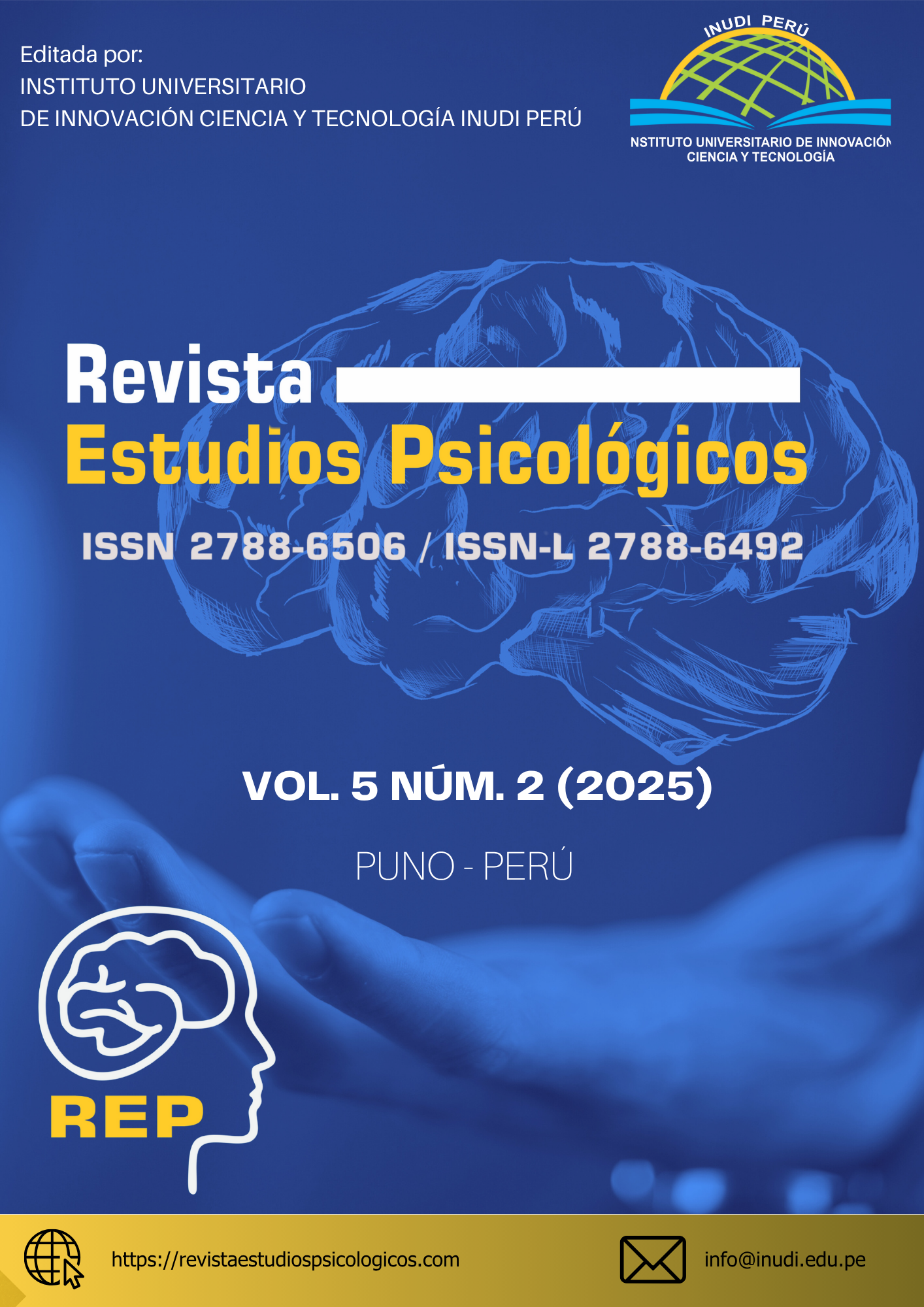Assédio sexual online a menores: semelhanças e diferenças na reincidência e no histórico criminal em comparação com outros agressores sexuais de menores
DOI:
https://doi.org/10.35622/Palavras-chave:
abuso sexual, assédio, criminalidade, pornografia, tecnologia da informaçãoResumo
Solicitações de caráter sexual dirigidas a menores por meio da internet, fenômeno identificado como assédio sexual online a menores, têm apresentado nos últimos anos uma tendência ascendente de forma contínua nas estatísticas criminais registradas na Espanha. O objetivo principal do presente estudo é descrever e comparar o histórico criminal e a reincidência de indivíduos detidos por assédio sexual online a menores, abuso sexual de menores e pornografia infantil, a partir de registros policiais, com a finalidade de identificar padrões diferenciais de conduta delitiva. Para isso, foram extraídas informações sobre histórico criminal e reincidência de três amostras distintas de detidos por crimes de assédio sexual online a menores, pornografia infantil e abuso sexual de menores. Esses dados, inicialmente obtidos de autos policiais, foram ampliados com informações de bases de dados de detenções policiais e, posteriormente, submetidos a tratamento estatístico. A metodologia adotada possui enfoque quantitativo, com delineamento não experimental, exploratório, descritivo e comparativo. Os resultados demonstram que tanto a taxa de reincidência quanto a de histórico criminal prévio são maiores nos delitos relacionados ao assédio sexual online de menores do que nas outras duas amostras. O histórico criminal por outros delitos sexuais também se mostra recorrentemente mais elevado. A partir desses resultados, pode-se deduzir que o perfil do assediador sexual de menores é muito mais semelhante ao do abusador sexual do que ao do infrator por pornografia infantil, razão pela qual tanto a resposta policial quanto as estratégias de reinserção devem ser adaptadas a tais características.
Estadísticas del Artículo
Referências
Aebi, M., Plattner, B., Ernest, M., Kaszynski, K., y Bessler, C. (2014). Criminal history and future offending of juveniles convicted of the possession of child pornography. Sexual Abuse, 26(4), 375–390. https://doi.org/10.1177/1079063213492344
Babchishin, K. M., Hanson, R. K., y Hermann, C. A. (2011). The characteristics of online sex offenders: A meta-analysis. Sexual Abuse: A Journal of Research and Treatment, 23, 92-123. https://doi.org/10.1177/1079063210370708
Bartosh, D.L., Garby, T, Lewis, D., y Gray, S. (2003). Differences in the predictive validity of actuarial risk assessments in relation to sex offender type. International Journal of Offender Therapy and Comparative Criminology, 47, 422438. https://doi.org/10.1177/0306624x03253850
Bergen, E., Davidson J., Schulz A., Schuhmann P., Johansson A., Santtila, P, y Jearn, P. (2014). The Effects of Using Identity Deception and Suggesting Secrecy on the Outcomes of Adult-Adult and Adult-Child or -Adolescent Online Sexual Interactions. Victims & Offenders 9(3), 276-298. https://doi.org/10.1080/15564886.2013.873750
Brouillette-Alarie, S. Proulx, J., Hanson, R.K. (2018). Three central dimensions of sexual recidivism risk: Understanding the latent constructs of Static-99R and Static-2002R. Sexual Abuse 30 (6), 676-704. https://doi.org/10.1177/1079063217691965
Creswell, J. W., & Creswell, J. D. (2018). Research design: Qualitative, quantitative, and mixed methods approaches (5th ed.). SAGE Publications.
De Santisteban, P., Gámez-Guadix, M. (2018). Prevalence and Risk Factors Among Minors for Online Sexual Solicitations and Interactions With Adults. The Journal of Sex Research. 55 (7), 939-950. https://doi.org/10.1080/00224499.2017.1386763
Dowling, C., Boxall, H.P., Kamarah L., Cameron C. (2021). Patterns and predictors of reoffending among child sexual offenders: A rapid evidence assessment. Trends and Issues in Crime and Criminal Justice, 632, 1-19. https://doi.org/10.52922/ti78306
Eke, A. W., Helmus, L. M., y Seto, M. C. (2018). A validation study of the child pornography offender risk tool (CPORT). Sexual Abuse. https://doi.org/10.1177/1079063218762434
Elliott, I. A., Martin, E. (2023). Post-release reoffending outcomes for individuals with offence-related sexual paraphilias. An exploratory risk-band analysis. Ministry of Justice Analytical Series. 2023. http://dx.doi.org/10.13140/RG.2.2.34751.18089
Endrass, J., Urbaniok, F., Hammermeister, L. C., Benz, C., Elbert, T., Laubacher, A., y Rossegger, A. (2009). The consumption of Internet CP and violent and sex offending. BMC Psychiatry, 9, 43. https://doi.org/10.1186/1471-244x-9-43
Fanniff, A. M., Schubert, C. A., Mulvey, E. P., Iselin, A. M. R., y Piquero, A. R. (2017). Risk and outcomes: Are adolescents charged with sex offenses different from other adolescent offenders? Journal of Youth and Adolescence, 46, 1394-1423. https://doi.org/10.1007/s10964-016-0536-9
Goller, A., Jones, R., Dittmann, V., Taylor, P., y Graf, M. (2016). Criminal recidivism of illegal pornography offenders in the overall population—A national cohort study of 4612 offenders in Switzerland. Advances in Applied Sociology, 6(2), 48–56. https://doi.org/10.4236/aasoci.2016.62005
Grünfeld, B. y Noreik, K. (1986). Recidivism among sex offenders: A follow-up study of 541 Norwegian sex offenders. International Journal of Law and Psychiatry, 9, 95-102. https://doi.org/10.1016/0160-2527(86)90019-1
Hanson, R. K. (2022). Prediction statistics for psychological assessment. American Psychological Association. https://psycnet.apa.org/doi/10.1037/0000275-000
Hanson, K. L., y Bussière, M. T. (1998). Predicting relapse: A meta-analysis of sexual offender recidivism studies. Journal of Consulting and Clinical Psychology, 8, 190–197. https://doi.org/10.1037/0022-006x.66.2.348
Hanson, R. K., Lee, S. C., & Thornton, D. (2022). Long Term Recidivism Rates Among Individuals at High Risk to Sexually Reoffend. Sexual Abuse, 36(1), 3-32. https://doi.org/10.1177/10790632221139166
Harris, A., y Hanson, R. K. (2004). Sex offender recidivism: A simple question (Cat. No. PS3-1/2004-2E). Public Safety and Emergency Preparedness Canada. https://www.publicsafety.gc.ca/cnt/rsrcs/pblctns/sx-ffndr-rcdvsm/index-en.aspx
Henshaw, M., Ogloff, J. R. P. y Clough, J. A. (2017). Looking beyond the screen: A critical review of the literature on the online child pornography offender. Sexual Abuse, 29(5), 416–445. https://doi.org/10.1177/1079063215603690
Hernández-Sampieri, R., Fernández-Collado, C., & Baptista, P. (2014). Metodología de la investigación (6.ª ed.). McGraw-Hill.
Kerlinger, F. N., & Lee, H. B. (2002). Foundations of behavioral research (4th ed.). Wadsworth.
Kloess, J. A., Beech, A. R. y Harkins, L. (2014). Online Child Sexual Exploitation: Prevalence, Process, and Offender Characteristics. Trauma, Violence & Abuse, 15(2), 126-139. https://doi.org/10.1177/1524838013511543
Langan, P. A., & Levin, D. J. (2002). Recidivism of prisoners released in 1994 (NCJ 193427). U.S. Department of Justice, Bureau of Justice Statistics. https://bjs.ojp.gov/content/pub/pdf/rpr94.pdf
Ley Orgánica 1/2015 (30 de marzo de 2015). Por la que se modifica la Ley Orgánica 10/1995, de 23 de noviembre, del Código Penal. Boletín Oficial del Estado, 77, 27061-27176. https://www.boe.es/diario_boe/txt.php?id=BOE-A-2015-3439
Lovins, B., Lowencamp, C. T., y Latessa, E. (2009). Applying the risk principle to sex offenders: Can treatment make some sex offenders worse? The Prison Journal, 89, 344-357. https://doi.org/10.1177/0032885509339509
Lowencamp, C. T., Latessa, E., y Holsinger, A. (2006). The risk principle in action: What havewe learned from 13,676 offenders and 97 correctional programs? Crime & Delinquency, 51, 1-17. https://doi.org/10.1177/0011128705281747
Montero, I., & León, O. G. (2007). A guide for naming research studies in Psychology. International Journal of Clinical and Health Psychology, 7(3), 847–862.
O’Connell, R. (2003). A typology of cyber sexploitation and online grooming practices. Preston, England: University of Central Lancashire. https://image.guardian.co.uk/sys-files/Society/documents/2003/07/17/Groomingreport.pdf
Owens, J. N., Eakin, J. D., Hoffer, T., Muirhead, Y., Lynn, J. y Shelton, E. (2016). Investigative aspects of crossover offending from a sample of FBI online child sexual exploitation cases. Aggression and Violent Behavior, 30, 3–14. https://doi.org/10.1016/j.avb.2016.07.001
Ozkan, T., Clipper, S.T., Piquero A.R., Baglivio, M., Wolff, M (2019). Predicting Sexual Recidivism. Sexual Abuse, 1– 25. https://doi.org/10.1177/1079063219852944
Piquero, A. R., Farrington, D. P., Jennings, W. G., Diamond, B. y Craig, J. (2012). Sex offenders and sex offending in the Cambridge study in delinquent development: Prevalence, frequency, specialization, recidivism, and (dis)continuity over the life-course. Journal of Crime and Justice, 35, 412-426. https://doi.org/10.1080/0735648x.2012.688527
Quinsey, V. L., Rice, M. E., y Harris, G. T. (1995). Actuarial prediction of sexual recidivism. Journal of Interpersonal Violence, 10, 85-105. https://doi.org/10.1177/088626095010001006
Ringenberg, T. R., Seigfried-Spellar, K. C., Rayz, J. M. y Rogers, M. K. (2022). A scoping review of child grooming strategies: pre-and post-internet. Child Abuse & Neglect, 123, 105392. https://doi.org/10.1016/j.chiabu.2021.105392
Schmucker, M. y Lösel, F. (2015). The effects of sexual offender treatment on recidivism: An international meta-analysis of sound quality evaluations. Journal of Experimental Criminology, 11(4), 597–630. https://psycnet.apa.org/doi/10.1007/s11292-015-9241-z
Seto, M. C. y Eke, A. W. (2015). Predicting recidivism among adult male child pornography offenders: Development of the Child Pornography Offender Risk Tool (CPORT). Law and Human Behavior, 39(4), 416–429. https://doi.org/10.1037/lhb0000128
Seto, M. C. y Hanson, R. K. (2011). Introduction to Special Issue on Internet-facilitated sexual offending. Sexual Abuse: A Journal of Research and Treatment, 23, 3–6. https://doi:10.1177/1079063211399295
Seto, M. C., Hanson, R. K. y Babchishin, K. M. (2011). Contact sexual offending by men with online sexual offenses. Sexual Abuse, 23(1), 124–145.
Soldino, V., Carbonell-Vayá E.J, Seigfried-Spellar, K.C. (2019). Criminological differences between child pornography offenders arrested in Spain. Child Abuse Neglect. https://doi.org/10.1016/j.chiabu.2019.104178
Tanner, J., y Brake, S. (2013). Exploring Sex Offender Grooming. https://kbsolutions.com/Grooming.pdf
Ward, T., Polaschek, D. y Beech, A. R. (2006). Theories of Sexual Offending. Chichester: John Willey & Sons. http://dx.doi.org/10.1002/9780470713648
Whittle, H. C., Hamilton-Giachritsis, C. E. y Beech, A. R. (2014). In their own words: Young peoples’ vulnerabilities to being groomed and sexually abused online. Psychology, 5, 1185–1196. https://doi.org/10.4236/psych.2014.510131
Winters, G. M., Kaylor, L. E., & Jeglic, E. L. (2021). Toward a Universal Definition of Child Sexual Grooming. Deviant Behavior, 43(8), 926–938. https://doi.org/10.1080/01639625.2021.1941427
Young, K. (2005). Profiling online sex offenders, cyber-predators, and pedophiles. Journal of Behavioral Profiling, 5(1), 1–18. https://netaddiction.com/articles/Pedophile.pdf
Downloads
Publicado
Edição
Seção
Licença
Copyright (c) 2025 Israel Díaz, Marta Vizcaíno (Autor/a)

Este trabalho está licenciado sob uma licença Creative Commons Attribution 4.0 International License.
La Revista Estudios Psicológicos del Instituto Universitario de Innovación Ciencia y Tecnología Inudi Perú está sobre una licencia internacional Creative Commons Atribución 4.0. Lo que permite que los archivos sean de libre acceso y distribuidos libremente.
LOS AUTORES RETIENEN SUS DERECHOS:
- Los autores retienen sus derechos de marca y patente, y tambien sobre cualquier proceso o procedimiento descrito en el artículo.
- Los autores retienen el derecho de compartir, copiar, distribuir, ejecutar y comunicar públicamente el artículo publicado en la Revista Estudios Psicológicos (por ejemplo, colocarlo en un repositorio institucional o publicarlo en un libro), con un reconocimiento de su publicación inicial.
- Los autores retienen el derecho a hacer una posterior publicación de su trabajo, de utilizar el artículo o cualquier parte de aquel (por ejemplo: una compilación de sus trabajos, notas para conferencias, tesis, o para un libro), siempre que indiquen la fuente de publicación (autores del trabajo, revista, volumen, número y fecha).



















